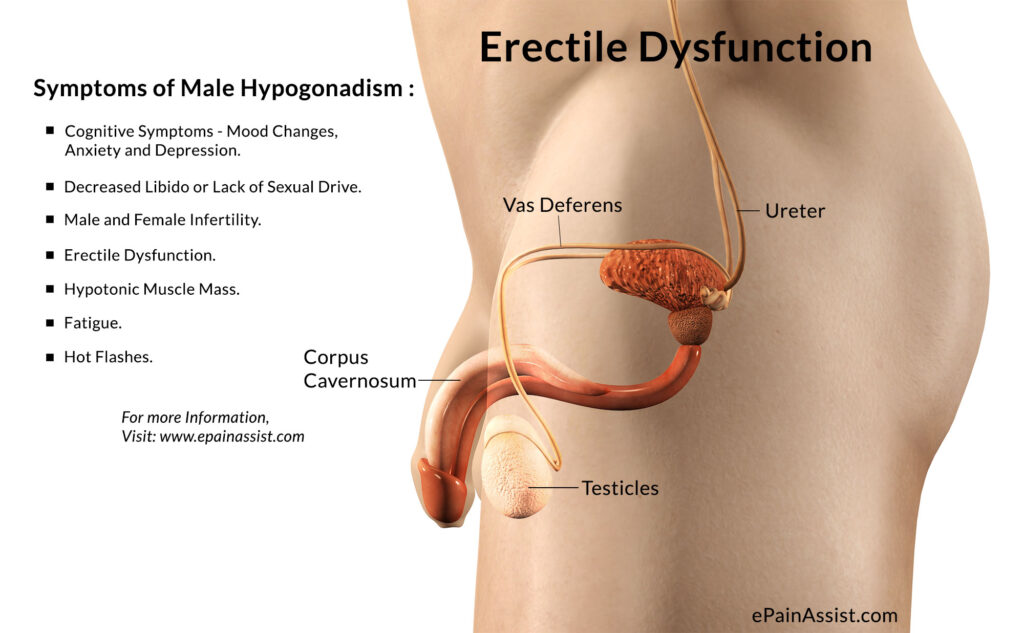Erectile Dysfunction
- Home
- Erectile Dysfunction

- Erectile dysfunction (ED) (Problems with erectile function)
Historically, men are reluctant to seek medical help for a wide variety of conditions, including erectile dysfunction (ED, previously called impotence). Thankfully, through an increased awareness that ED is common, treatable and occasionally is an important marker of an underlying health problem, men are more likely to seek medical help, and appreciate that they should not be embarrassed about seeking help for such a common condition
- Symptoms
A large survey in the United Stated showed that 50% of males aged between 40 and 70 years had experienced ED. Seeking help from your doctor who may refer you to a Urologist is important, not only to treat the problem, but also to look out for any other associated health problems. Patients have problems with achieving an erection, maintaining an erection, unsatisfied with the rigidity of penis or there is a deviation of the erect penis.
- Causes
A reduction in the blood flow to the arteries of the penis is the commonest reason for the ED and is sometimes a marker of a vascular condition elsewhere, or can be related to a high cholesterol or diabetes – all of which are important to recognize and investigate. There might be abnormal scarring (Peyronies disease) in the penis, which causes deviation of penis.
- Treatment
The commonest treatment for ED is medical using medicine (PDE-5 inhibitors) that enhances the blood supply to penis. There are surgical treatment available to treat Peyronies disease and also ED.
- Urinary Incontinence
Urinary incontinence (UI) is leakage of urine when a person does not mean to. It is very common condition, more so in females.
- Symptoms
Incontinence is usually very distressing and has a significant impact on many aspects of a patient’s life. Often many patients have significant symptoms that may or may not be accompanied with incontinence, such as frequency of urine and urgency (a sudden compelling desire to empty the bladder which is difficult to defer).
- Causes
Urinary incontinence is more common in women. The risk factors that play a key role in causing UI include and also pregnancy, childbirth, gynaecological prolapses and pelvic operations. In men, urinary incontinence is seen principally following surgery on the prostate or radiotherapy.
- Treatment
There are different types of incontinence of urine, including stress incontinence (urine leak on coughing, laughing, sneezing), urge incontinence or mixed urinary incontinence. The treatment of these symptoms is determined by the causative factors. Urge urinary incontinence is normally dealt with medication where as a pelvic floor exercises with or without surgery is required for addressing stress urinary incontinence.

